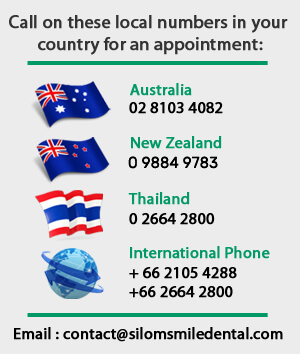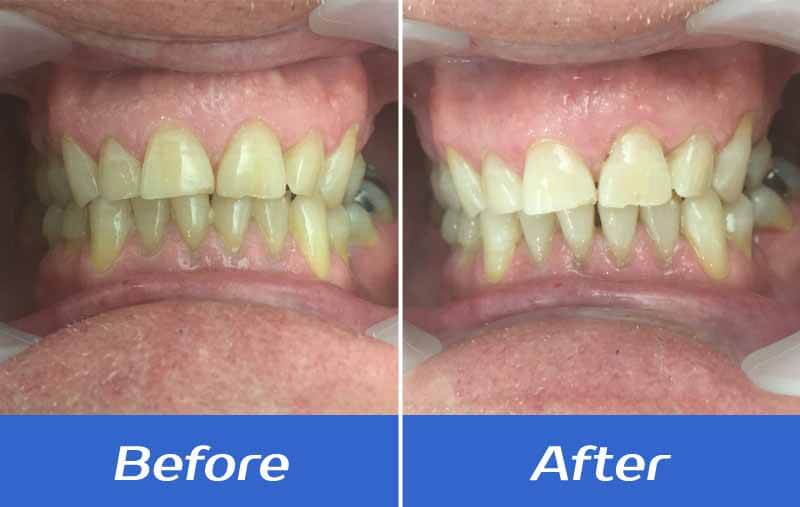
The removal or extraction of wisdom teeth (otherwise known as our third molars) is one of the most common procedures carried out by dentists. Our wisdom teeth grow back at the back portion of the gums and are usually the last set of molars to come through. In general, we usually grow four of these third molars – one in each of our gum’s corner.

Our wisdom teeth typically emerge through our gums during our late teens or during our early 20’s. By this period, our other 28 adult teeth are usually in position, usually leaving little space in our mouth for the final molars to grow properly. Due to the lack of space, the wisdom teeth can occasionally emerge at an angle or at some point, gets stuck and emerge partially. When a wisdom tooth emerges in such a manner, it would be classified as an “impacted” tooth.
Your dentist will be able to determine if you have impacted wisdom tooth/teeth condition, and advise you whether they need to be extracted or not. But more often than not, a wisdom tooth that has become impacted or have not fully emerged through the surface of your gum can cause you to experience severe pain and discomfort. Moreover, the condition may cause more serious dental problems, as food and bacteria can accumulate around the edge of the affected tooth would eventually cause plaque build-up leading to:
- Tooth Decay – Tooth decay or dental caries develops when plaque begins to breakdown your tooth. In its advanced stage, the decay leaves holes in your tooth and then damages the surrounding teeth as well.
- Gum Disease – Also called gingivitis or periodontal disease, this condition occurs when plaque emits toxins that irritate your gums, causing them to swell and starts to induce pain. Gum disease may as well affect the bone around the affected wisdom tooth and its surrounding teeth.
- Pericoronitis – This generally occurs when bacterial plaque causes an infection to the soft tissues surrounding the impacted wisdom tooth.
- Cellulitis – A condition when a bacterial infection affects your cheeks, tongue, or throat.
- Abscess – This usually happens when bacterial infection causes pus to accumulate in your wisdom tooth and/or its surrounding tissues.
- Cysts and Benign Growths – Although it seldom occurs, an impacted wisdom tooth can actually develop a fluid swelling, otherwise known as a Cyst.

Our wisdom teeth typically emerge through our gums during our late teens or during our early 20’s. By this period, our other 28 adult teeth are usually in position, usually leaving little space in our mouth for the final molars to grow properly. Due to the lack of space, the wisdom teeth can occasionally emerge at an angle or at some point, gets stuck and emerge partially. When a wisdom tooth emerges in such a manner, it would be classified as an “impacted” tooth.
WISDOM TOOTH EXTRACTION PROCEDURE
The dental surgery procedure can either be carried out by a dentist or a specialist surgeon (in a hospital), and prior to the extraction of your wisdom tooth, an X-ray of your mouth may be required to help determine who should carry out the surgical procedure. Our clinic will discuss any additional or payment charges, if there would be any, before the procedure begins. The entire procedure typically involves three simultaneous stages – (1) Anesthetic, (2) Removal of Tooth/Teeth, and (3) Post-Surgery.
(1) Anesthetic – Before the removal of your wisdom tooth/teeth, your dentist will be injecting local anesthetic in order to numb the tooth and its surrounding area. If in case you feel anxious about the procedure, your dentist or surgeon may prescribe you with a sedative to help you relax all throughout the extraction. General anesthesia is rarely administered, and most likely the procedure will be carried out in a hospital. It is mostly recommended if you would be opting to extract all of your wisdom teeth all at once.
(2) Removal of the Tooth – In any case that the tooth has not come through your gum, an incision (small cut) will be performed to gain access to it. A tiny piece of a bone covering your tooth may as well be required to be removed. Usually, the dentist may cut your tooth into smaller parts in order to make it more convenient to extract through the opening. In cases where the tooth has actually come through the gum, less incision would be required to carry out the removal of your tooth.
By the time your tooth is about to be actually pulled-out, expect to feel some pressure since your dentist or oral surgeon will have to widen the socket holding your tooth by rocking it back and forth before totally pulling it out.
The actual surgical procedure to extract your wisdom tooth shouldn’t be painful at all since the area is numb. However, in the instance you feel any pain at any time during the procedure; just let your dentist know so that additional anesthetic may be induced properly. The removal procedure usually lasts a few minutes on simple cases, but sometimes it can last longer than 20 minutes for complicated ones.
(3) Post-Surgery – After the surgical procedure, if an opening or an incision was made by your dentist or oral surgeon, dissolving stiches are more or less used to close the wound. You will be informed on how long the stiches will take to dissolve but the usual period is from 7 to 10 days.
Your dentist will place sterile gauze over the extraction site and may ask you to apply pressure on it by biting your jaws together for approximately one hour. This would allow blood clot to quickly develop into the emptied tooth socket. Blood clots are essential to the healing process of the extraction site, so don’t try to dislodge them even if they may appear somewhat unpleasant.
Your dentist or oral surgeon may prescribe you with over-the-counter pain medications to avoid discomfort and pain after the anesthesia wears off. If necessary, you would also be prescribed with antibiotics, especially if you have an on-going infection. During the first 24 hours following your wisdom teeth extraction, do remember to avoid the following:
- Rinsing with Liquid Mouthwash, especially alcohol-based products
- Drinking Alcoholic Beverages and Smoking
- Drinking Hot Liquids such as Coffee, Tea, or Soup
- Strenuous exercise or physical activities
If at any time you experience any swelling on your cheeks, you can simply remedy the situation by applying an icepack onto the affected cheek. If excessive bleeding occurs, immediately call your dentist’s office and ask for the appropriate steps to remedy the problem.
Treatment Quicklinks
Int'l Contact Numbers









